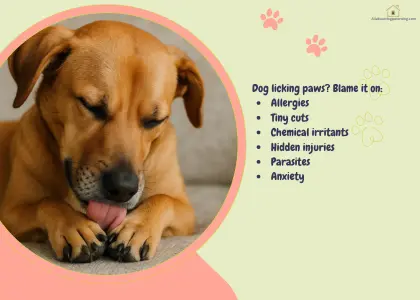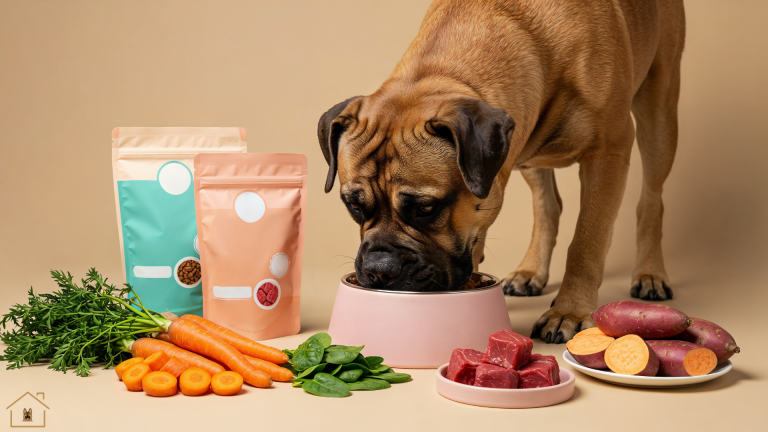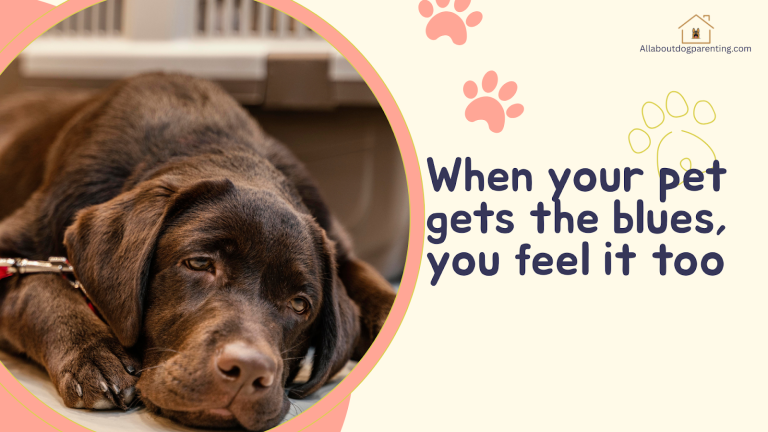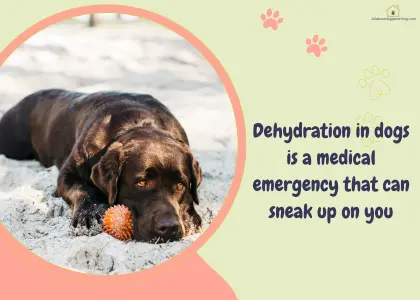12 Signs Your Dog’s Food Isn’t as Healthy as You Think
So, you’ve chosen the most popular dog food for your pet or one that all the social media influencers are talking about. Or maybe, you put in a lot of work in preparing your dog’s meals from scratch. Perhaps, the food you serve comes with the promise of holistic health and claims to be enriched with all sorts of essential nutrients. But is it meeting your pet’s nutritional needs? To know the answer, you don’t have to be a veterinarian or a canine nutrition expert. Signs of unhealthy dog food can be easily spotted in your pet’s overall health and well-being. All you need is to know where to look.
In this article, I will shed light on what these signs are and why these dog nutrition red flags are a cry for help you mustn’t overlook. But before we get into that, let’s quickly talk about the importance of quality dog food and its impact on your pet’s health and longevity.
Table of Contents
Importance of Quality Dog Food
Feeding your furry companion isn’t just about keeping them full—it’s about nourishing them with the right balance of nutrients that keep them healthy, happy, and thriving. When it comes to dog nutrition, quality and choice of ingredients makes all the difference. Here’s is why it’s so essential:
1. Better health, inside and out
Quality dog food formulated with balanced nutrients tailored to your dog’s needs, from protein for muscle maintenance to essential fatty acids for a shiny coat, promotes better health in the long-term. Studies show that premium ingredients improve digestibility, ensuring that your dog absorbs the maximum nutrients from their meals. Dogs fed on high-quality diets often have better energy levels, improved immunity, and a reduced risk of chronic diseases like diabetes and heart problems.
2. Better digestibility
Have you noticed differences in your dog’s stool depending on what they eat? That’s because the quality of food determines its digestibility. If your dog is on a high-quality diet, they will produce less and well-formed waste, which indicates that a large part of their food has been duly processed by their digestive system and necessary nutrients absorbed.
On the other hand, low-quality foods made with fillers like corn and meat by-products can result in larger, softer stools, which is a sign that your dog’s digestive system isn’t able to fully process the food they’re being fed. Paying attention to your pet’s excrements can, thus, be a simple yet effective way of evaluating the healthiness of dog food brands.
3. Long-Term Cost Savings
Premium dog food might pinch your pocket up front but if you compromise on your pet’s nutrition, you will likely end up spending a whole lot more on their medical care and treatment. Think about it, what is a better choice—investing in your dog’s nutrition or medication? The answer is a no-brainer.
Not only do dogs on balanced diets tend to have fewer vet visits due to better overall health, given the nutrient-dense composition of high-quality foods, you typically need to feed smaller portions as compared to lower-quality alternatives.
Suggested Reading: 7 Common Myths About Dog Nutrition You Need to Stop Believing
4. Tailored nutrition for different needs
Dogs have varied and changing nutritional requirements. Different breeds need different kinds of nutrition. Besides, a dog’s nutritional needs change as they go through different life stages. Puppies, for instance, need the most nutrient-dense needs to support growth. Adults thrive on a balanced maintenance diet whereas seniors may benefit from easily digestible proteins to compensate for age-related changes in metabolism. Choosing quality food ensures you’re meeting your pet’s specific needs.
12 Signs Your Dog’s Food Isn’t as Healthy as You Think
Now that we’ve established that high-quality, nutrient-dense, balanced food is not an option but a necessity for raising a healthy, happy furry baby, let’s circle back to the question: how do you know if your dog’s food isn’t nurturing them as well as you’d hoped? Sooner or later, symptoms of inadequate dog nutrition begin to emerge. Here are the 12 most common signs of poor-quality dog food that you need to keep an eye out for:
1. Dull coat or excessive shedding
A dog’s coat is a direct reflection of the kind of nutrition they’re getting. If your pet’s coat is dull and lifeless, and you’re tired of looking up solutions for excessive shedding and making dog fur shiny, it’s one of the clear indicators of poor-quality dog food that lacks essential nutrients like omega-3 and omega-6 fatty acids. This typically happens with foods that list “animal fat” as an ingredient, without specifying the source. High quality foods, on the other hand, contain named fats like “salmon oil” or “chicken fat.”
2. Frequent digestive issues
Frequent digestive distress and episodes of vomiting, diarrhea, or constipation are among the common symptoms of inadequate dog nutrition often caused by over-processed or allergenic ingredients that can irritate your dog’s stomach.
Poor-quality dog food may also lead to Soft, unformed stools, indicating poor nutrient absorption, and persistent flatulence due to fermentation of indigestible fillers like beet pulp. Canine trainer and nutritionist Linda Case explains, “Indigestion often stems from subpar ingredients, like low-grade corn or soy products.”
3. Low energy or lethargy
If you’re wondering how to identify bad dog food, you may find the answer in your dog’s energy levels. Food lacking in high-quality protein or complex carbohydrates may not be able to meet your pet’s energy requirements. Likewise, foods with excessive fillers like corn gluten meal may provide quick energy spikes but not sustained energy through the day. As a result, you may notice that your pet is always lethargic and unwilling to engage in activities that dogs typically enjoy—like going on walks or playing fetch.
4. Unexplained weight gain or loss
One of the most telling signs of unhealthy dog food is an unexplained change in your dog’s weight. In this case, weight gain could indicate that your dog’s food comprises unhealthy fats or carbohydrates that supply empty calories without meeting their nutritional needs. On the other hand, weight loss could be the result of a diet insufficient in bioavailable protein, commonly seen with meals primarily composed of plant-based proteins like pea or potato protein.
5. Excessive thirst
Excessive thirst is a clear warning sign of poor health in dogs and can be helpful in identifying harmful ingredients in dog food. If your dog drinks too much water or always seems thirsty, it could be because they are consuming food that is overly salty or dehydrating. Cheap dog foods use salt as a flavor enhancer and preservative. This can lead to excessive sodium consumption, which can be dangerous for a dog’s health. If you notice this, I’d recommend seeking medical attention as soon as possible.
Suggested Reading: 7 Signs Your Dog’s Diet Needs an Upgrade
6. Persistent itching or skin problems
Like your dog’s fur, their skin health is also a great measure of their overall health. Red patches, rashes, bald spots, incessant scratching can all be indicators of poor-quality dog food because these issues can be triggered by food allergies or intolerances to ingredients like chicken, beef, or grains. Dr. Jean Dodds advises, “Switching to a novel protein diet or grain-free formula can help identify the allergen.”
7. Bad breath
Poor-quality dog food can also lead to plaque buildup and bacterial overgrowth in the mouth. Use of artificial additives and by-products can worsen this problem. Besides, foods with hard-to-digest proteins can produce unpleasant odors that manifest as bad breath.
8. Frequent ear infections
If you’ve ever tried your hand at cleaning dog ears or dealt with a nasty infection, you’d know how sensitive this part of their body is. With exposure to allergens, it can become susceptible to frequent and recurring infections. Excessive head shaking, scratching around the ears, or foul-smelling discharge can be symptoms of inadequate dog nutrition or indicators that your dog’s diet is making them sick.
9. Unusually large stools
We’ve talked about the connection between a dog’s stools and the quality of their diet. Foods devoid of quality ingredients often result in large stool volumes, which means that much of what your pet is eating is passing right through their system instead of being duly digested. This usually happens when your dog’s food contains low-digestibility fillers like corn, soy, or cellulose. You see, evaluating the healthiness of dog food brands doesn’t need a complex approach or elaborate testing. The answer can be found in your dog’s excrements.
10. Foul-smelling gas
If you’ve ever had to bear a dog’s fart, you’d know how atrocious it can be. If your dog’s food isn’t healthy and nourishing, this unpleasantness can become a regular feature in your life. Dog foods made with hard-to-digest ingredients like soy proteins, high-fiber legumes, or ones that use lentils or chickpeas as substitutes for grains tend to result in persistent, foul-smelling gas. While it’s not unusual for dogs to fart, excessive and foul flatulence is one of the biggest dog nutrition red flags that should not be overlooked.
11. Persistent hunger despite eating
Among the common indicators of poor-quality dog food is a lack of satiety. If your dog always seems hungry—searching for food in their bowls, begging you for scraps, eating out of the trash can—it means their food is high in fillers but low in nutrient-density.
While their stomach may feel full temporarily, the lack of vital proteins and fats leaves them feeling unsatisfied. This is commonly seen in dogs being fed food that have a high percentage of rice or wheat gluten instead of meat protein.
12. Behavioral changes
Among the most concerning of the dog food health warning signs is a change in temperament and behavior. Lack of essential nutrients like B vitamins or amino acids, which are essential for proper brain function, may lead to symptoms like irritability, anxiety, or depression. Likewise, taurine deficiency, particularly in grain-heavy diets, can lead to behavioral lethargy and even heart problems.
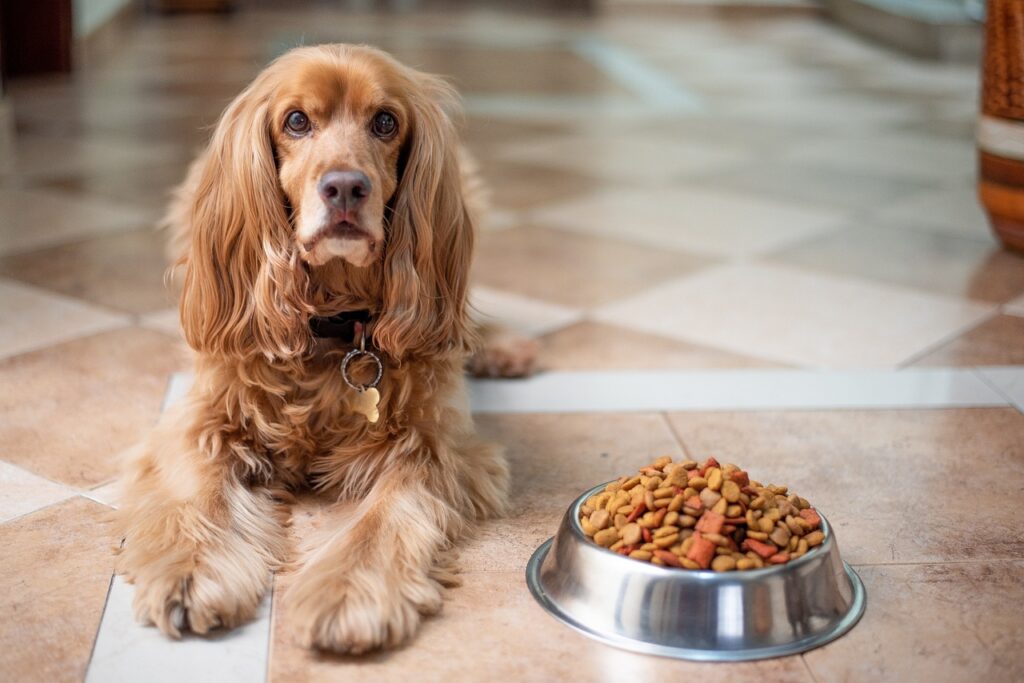
What Can You Do to Ensure Your Dog Gets Proper Nutrition?
Zeroing in on the right food, tailored to your pet’s unique needs, can seem overwhelming at first, given that there are so many options to choose from and so many variables to factor in when making that choice. However, it all boils down to being informed about what’s right for your dog and what’s not.
If you feed your dog homemade meals, the best way to meet their nutritional requirements is to work with a canine nutritionist to come up with nutritionally complete food options. If you feed them commercially prepared food, here are a few things to bear in mind:
Dog nutrition red flags
Steer clear of the food that:
- Use generic terms like “meat meal” or “animal by-products”
- Have excessive fillers such as corn, wheat, and soy
- Don’t have named protein sources. For instance, “chicken” is a green flag whereas “poultry” is a red flag
What should you look for?
Here’s what you should look for instead:
- Named proteins: Look for real meat like chicken, beef, or fish as the first ingredient
- No fillers: Avoid foods with unnecessary fillers like corn or soy
- Transparent labels: Trust brands that are clear about their ingredient sources and nutritional standards
- AAFCO certification: Choose dog food meeting the standards of the Association of American Feed Control Officials (AAFCO)
Suggested Reading: Can You Mix Wet and Dry Dog Food?
FAQs
- How can I identify high-quality dog food?
To identify high-quality dog food, check for a named protein (e.g., chicken or salmon) as the first ingredient, no fillers like corn or soy, and presence of essential nutrients like omega-3s and taurine. Look for AAFCO certification, which ensures the food meets balanced nutrition standards. Avoid artificial additives, by-products, or generic terms like “meat meal”.
- What role does digestibility play in dog food quality?
Digestibility determines how well a dog can absorb nutrients from its food. High digestibility ensures essential proteins, fats, and vitamins are utilized efficiently, supporting energy, growth, and overall health. Poorly digestible foods, often containing fillers like corn or by-products, lead to nutrient waste and larger stools.
- Are grain-free diets better for my dog?
Grain-free diets aren’t inherently better for all dogs. They can benefit dogs with specific grain allergies or sensitivities but may lack balance if over-reliant on legumes or potatoes. Recent studies have linked some grain-free diets to heart issues, particularly due to low taurine.
Takeaway
Recognizing these signs of unhealthy dog food early can go a long way in protecting your dog from long-term health issues. Remember, investing in quality nutrition means setting the foundation for your furry companion’s long, healthy life. Don’t let the slick marketing terms and social media trends influence your choice. As long as you pay attention to the finer details like reading labels and understanding if a particular food caters to your pet’s unique requirements, you will be able to choose well. If you’re still unsure, it never hurts to consult an expert.



